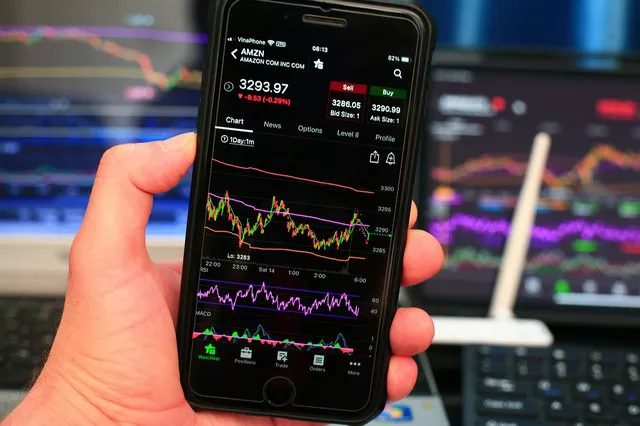Futures trading involves the buying and selling of standardized contracts to hedge risks or speculate on price movements of underlying assets. One crucial aspect of futures trading is the process of rollover, which occurs when traders switch from holding contracts that are close to expiration to contracts with later expiration dates. In this article, we explore how futures rollover works, its significance for traders, and strategies to effectively manage rollover in futures trading.
Introduction to Futures Rollover
Futures contracts have finite lifespans, typically expiring on predetermined dates. As contracts approach expiration, traders need to decide whether to close out their positions or roll them over to contracts with later expiration dates. Rollover involves liquidating existing positions in expiring contracts and establishing new positions in contracts with extended expiration dates. Understanding the mechanics of futures rollover is essential for managing trading strategies, minimizing costs, and maintaining exposure to desired market positions.
Why Rollover is Necessary
Rollover is necessary for several reasons:
Continuous Exposure: Rollover allows traders to maintain continuous exposure to the underlying asset or market without interruption caused by contract expirations.
Risk Management: Rollover enables traders to manage risks associated with contract expirations, including potential disruptions to trading strategies and exposure to adverse price movements.
Market Efficiency: Rollover contributes to the efficiency of futures markets by ensuring liquidity and facilitating the transfer of positions between expiring and new contracts.
Factors Affecting Rollover Decisions
Several factors influence traders’ decisions regarding futures rollover:
Expiration Date: Traders consider the expiration dates of expiring contracts and evaluate whether rollover is necessary to maintain desired market exposure.
Market Liquidity: Traders assess the liquidity of expiring and new contracts to ensure smooth execution of rollover transactions without significant price slippage.
Market Conditions: Traders analyze current market conditions, including volatility, trading volumes, and price trends, to determine the optimal timing for rollover.
Cost Considerations: Traders evaluate the costs associated with rollover, including transaction costs, bid-ask spreads, and financing costs, to minimize the impact on trading performance.
Strategies for Futures Rollover
Traders employ various strategies to manage futures rollover effectively:
Calendar Rollover: Traders roll over positions from expiring contracts to contracts with consecutive expiration dates, maintaining consistent exposure to the underlying asset.
Staggered Rollover: Traders stagger rollover transactions over multiple days or weeks to mitigate the impact of rollover on market liquidity and minimize transaction costs.
Spread Trading: Traders execute spread trades, such as calendar spreads or intermarket spreads, to capitalize on price differentials between expiring and new contracts while hedging against market risks.
Optimal Timing: Traders carefully time rollover transactions to coincide with periods of high liquidity and favorable market conditions, minimizing execution risks and maximizing trading efficiency.
Process of Futures Rollover
The process of futures rollover typically involves the following steps:
Evaluation: Traders assess the need for rollover based on factors such as expiration dates, market conditions, and trading objectives.
Position Liquidation: Traders close out existing positions in expiring contracts by selling long positions or buying back short positions.
Contract Selection: Traders select new contracts with later expiration dates that align with their trading strategies and market outlook.
Order Placement: Traders place orders to establish new positions in selected contracts, taking into account factors such as bid-ask spreads, order types, and execution methods.
Monitoring: Traders monitor market developments and adjust rollover strategies as needed to respond to changing market conditions and trading opportunities.
Cost Considerations in Futures Rollover
Traders should be mindful of costs associated with futures rollover, including:
Transaction Costs: Fees charged by brokers or exchanges for executing rollover transactions, including commissions and exchange fees.
Bid-Ask Spreads: Price differentials between buying and selling prices of futures contracts, which can impact the overall cost of rollover.
Financing Costs: Costs associated with carrying positions in futures contracts, such as interest charges on margin accounts or financing costs for leveraged positions.
Tax Implications: Tax consequences of rollover transactions, including capital gains or losses, which may vary depending on individual tax jurisdictions and trading strategies.
Challenges in Futures Rollover
Despite its importance, futures rollover poses several challenges for traders:
Market Volatility: Rollover transactions may be affected by market volatility, leading to increased price fluctuations and execution risks.
Liquidity Constraints: Illiquid markets or low trading volumes can hinder the execution of rollover transactions, resulting in wider bid-ask spreads and higher transaction costs.
Timing Risks: Timing rollover transactions requires careful analysis of market conditions and may be subject to unforeseen events or disruptions.
Regulatory Compliance: Traders must comply with regulatory requirements and exchange rules governing futures trading and rollover procedures.
Conclusion
Futures rollover is a critical aspect of futures trading, enabling traders to maintain continuous exposure to the underlying market and manage risks associated with contract expirations. By understanding the factors influencing rollover decisions, implementing effective rollover strategies, and managing associated costs and challenges, traders can optimize their trading performance and capitalize on opportunities in futures markets. Whether executing calendar rollovers, staggered rollover strategies, or spread trades, traders leverage their knowledge and expertise to navigate futures rollover with confidence and achieve their trading objectives.


